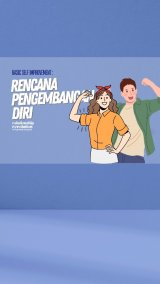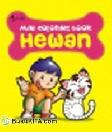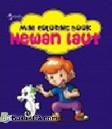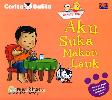Macromedia Director 8.5 Shockwave Studio For 3D Training From The Source
DESCRIPTION
This book offers step-by-step lessons adapted from Macromedia's training curriculum. The lessons cover the capabilities of Director 8.5 and the multimedia elements used in Director projects. Particular attention is given to graphics, text, animation, sound, digital video, and Lingo, Director's internal programming language. An accompanying CD-ROM contains all the files needed to complete the book's activities, sample files for comparing results, and a demo version of Director 8.5. Phil Gross works as a consultant and writes training manuals. Mike Gross works with interactive multimedia programming.
Macromedia Director is the best-selling multimedia authoring program and the leading tool for creating interactive media for the Web, CD-ROM, DVD-ROM, corporate presentations, and more. Director 8.5 Shockwave Studio, the latest upgrade, now includes Intel Internet 3D Graphics Software, which means that for the first time, developers have an easy way to deliver interactive 3D content over the Web. Macromedia Director 8.5 Shockwave Studio includes Director 8.5, Fireworks 4, Shockwave 8.5 Player, Shockwave MultiUser 3 Server, and more.
Macromedia Director 8.5 Shockwave Studio for 3D covers the new 3D capabilities added to Director with the release of Version 8.5. This book uses the same step-by-step instructional method that has made the Director 8 Authorized book so popular and which gets the tasks done with the least amount of frustration for the reader. Whether you're a seasoned Director user looking to extend your Director movies into the third dimension or a 3D graphic artist using Director to propel your models into Shockwave and onto the Web, this book gives you practical, hands-on training from the source. The included CD-ROM holds all the files and models you'll need to work through the lessons, plus sample files you can compare with your own results.
The book consists of two tracks for the two types of people who will be using Director 3D. One track is for current Director users and Lingo programmers and covers in detail the elements of 3D programming--from vector math and creating 3D primitives through lights, shaders and textures, animation (including bones) and the creation of 3D objects using meshes. The other track is for 3D people who are not Director users, such as 3ds max (formerly known as 3D Studio Max) designers. That track gets 3D graphic artists up to speed with Director, allowing them to import a 3D file and output an interactive Shockwave movie that can be dropped onto a Web page. No Lingo programming is required for this track as it is done entirely through use of the Library Palette behaviors--all you need for many e-commerce applications.
Table of Contents
Introduction.
Lesson 1. Director Overview.
Creating a Folder on Your Hard Drive. Creating a Director Movie: The Basic Steps. Using Director's Windows. Playing a Movie. Viewing the Members of the Cast. Interpreting Cast Thumbnails. Setting Cast Preferences. Viewing the Score. Ordering Sprites in the Score. Viewing the Effects of Channels. Working in the Shockwave 3D Viewer. Working in the Text Window. Working in the Paint Window. Using the Property Inspector. The 3DPI. Installing the 3DPI. Using the 3DPI. Making Changes. Making Changes with the Shockwave 3D Viewer. Undoing Changes. Making Changes with the Property Inspector. Working with the Property Inspector Lights. Setting the Background Color. Using the Property Inspector Shader. Making Changes with the 3DPI. Using Director Help.
Lesson 2. Creating a Movie.
Creating a New Movie. Setting Up for Convenient Work. Setting the Stage Size. Setting the Stage Color. Choosing the 3D Renderer. Importing a Cast Member. Saving a Movie. Creating a Sprite. Looping a Movie. Creating a Bitmap Member. Creating a Text. Cast Member. Creating More Sprites. Adding a Sprite to the Score. Selecting a Sprite. Moving a Sprite. Applying Inks to Sprites. Selecting Multiple Sprites. Modifying a Cast Member. Setting the Sprite Location. Aligning Sprites. Animating a Sprite. Tweening a Sprite. Creating Animation with Images. Setting the Tempo and Frame Speed. Adding a Looping Behavior. Adding Interactivity. Modifying a Behavior. Removing the Go to Frame X Behavior. Using Markers. Adding a Quit Button. Choosing the Export Format. Creating aProjector. Publishing a Shockwave Movie. Converting and OBJ File to W3D.
Lesson 3. Using Behaviors.
Adding a 3D Behavior to a Movie. Changing the Sprite Size. Modifying Behavior Parameters. Publishing the Movie to Shockwave. Viewing More Information about Behaviors. Adding a Button Behavior. Adding the Inactive Version of the Button. Reusing Behaviors. Adding a Jump to Marker Button Behavior. Using Other Jump Behaviors. Adding a Play Movie X Behavior. Using the Play Frame X Behavior. Using the Play Done Behavior. Using Go Behaviors. Using Looping and Waiting Behaviors. Working with 3D Actions and Triggers. Using Triggers. Working with Multiple Triggers. Using the Drag Model to Rotate Behavior. Using the Mouse Left Behavior. Working with Invisible Models. Setting the Rotate Axis. Applying Dual Triggers. Using the Orbit Camera Behavior. A Work in Units. Using the Dolly Camera Behavior. Panning and Rotating the Camera. Using the Drag Model Behavior. Using the Fly Through Behavior. Using the Play Animation Behavior. Using the Model Rollover Cursor Behavior. Using the Automatic Model Rotation Behavior. Some Other 3D Behaviors. Using the Click Model Go to Marker Behavior. Creating Model Primitives. Optimizing Using LOD and SDS. Using the Show Axis Behavior. Working with Streaming Behaviors. Last Word on Behaviors.
Lesson 4. 3D Text Using Behaviors
eating the Text. Converting from 2D to 3D. Adding a Rotation Behavior. Adjusting the Sprite's Bounding Rectangle. Adjusting the 3D Text's Camera. Applying Background Transparent Ink. Working with 3D Text Faces. Setting Smoothness. Applying a Bevel Edge. Adjusting Tunnel Depth. Applying Shader Texture. Combining 3D Text with 2D. Working with the Tool Palette and Shapes. Sizing Sprites. Positioning the Text. Adding Behaviors. Creating Special Characters. Embedding Fonts. Using the Typewriter Effect. Working with Individual Letters. Creating 3D Letters. Inserting Keyframes. Adding Letter Animation. Rotating Letters.
Lesson 5. Director 3D Basics.
Creating a Folder on Your Hard Drive. Introducing Director 8.5. What's New in Director 8.5. What's Included with 3D. Making Sense of 3D Components. Digging Deeper into 3D Components. The Creation Process. Working with Lights and Cameras. Parent-Child Hierarchy. Axes and Orientation Size Doesn't Matter. Understanding Models. Opening the Shockwave 3D Viewer. Inspecting the Property Inspector. Setting Lights and Textures in the PI. Exploring the 3DPI. Installing the 3DPI. Using the 3DPI. Keeping Changes. Using he 3DPI Model Tab. Viewing the Axes. Using 3DPI Lights. Using 3D Behaviors. Viewing 3D Axes. Viewing 3D Axes Part II. Creating a 3D Text Example. Getting Help.
Lesson 6. Making and Moving Models.
Overview. Using Primitives. Defining Some Terms. Creating a Model Resource. Understanding Model Resource Properties. Using newMode1. Creating a 3D Cast Member. Creating a 3D Sprite. Creating with a Movie Script. Avoiding Duplicate Names. Lighting It Up. Setting the Camera's Viewpoint. Understanding What You See. Viewing the Axes. Regarding Model Reference. Beginning Movement. Using Rotate and Translate. Creating Lights. Removing Box Sides. Understanding Faces, Meshes, and Sides. Creating a Plane. Creating a Sphere. Creating a Cylinder.
Lesson 7. Improving Your 3D Scene.
Creating a New Source File. Applying Shaders and Textures. Using the newShader Command. Using the newTexture Command. Importing a Bitmap. Adding the Texture. Assigning the Shader to the Model. Exploring Emissive and Specular Properties. Using Multiple Shaders. Adding a Rotation Behavior. Examining Relative Rotation. Enabling Camera Rotation.
Lesson 8. Parent-Child Relationships.
Setting Up. Pointing the Camera. Defining Relative Rotation. Using Rotation #self Relative. Using Rotation #world Relative. Using Point Plus Axis Rotation. Defining Parent-Child Relationships. Understanding Transforms. Using the addChild Command. Creating an Example of the uniCar. Building the Solar System. Adding Independent Motion. Adding a Moon.
9. Vector Math Function.
Getting Started. Adjusting the Camera. Using Vector Math. Returning the Length of a Vector. Normalizing the Vector. Creating Random Vectors. Using Math Operators. Finding the Distance between Tow Vectors. Determining the Angles between Vectors. Using perpendicularTo and crossProduct. Converting Frames of Reference. Defining the Transform. Using Phantom Models. Returning to the Sun. Animating a Series of Motions. Adding Interpolation to the Camera. Interpolation Caveats. Using distanceTo. Turning Car Wheels.
10. Lights.
Creating Lights. Referencing Lights. Removing Lights. Using Ambient Lights. Using the Shader's diffuse Settings. Using Directional Light. Using a Spot Light. Using Specular Light.
11. Shaders and Textures.
Creating and Applying Textures. Considerations When Using Textures. Swapping Textures. Tiling Textures. Rotating and Translating Textures. Investigating Texture Mapping. Modifying Texture Mapping. Using Multiple Textures. Using the Light Maps. Setting a Background Color. Using Alpha Channels. Setting textureRenderFormat. Discovering the Flat Shader.
12. 3D Text Using Lingo.
Creating 3D Text. Introducing the Automatic Camera. Applying a Dragging Behavior. Adjusting the Sprit Size. Using Background Transparent Ink. Displaying Faces. Using the tunnelDepth Property. Using Texture on Text. Using the smoothness Property Using a Bevel with 3D Text. Caveats on Using 3D Text. Spinning the Text. Extruding Text. Extruded Text Options. Using Backdrops and Overlays.
13. Cloning.
Checking the Member's State. Creating New Models. Using the clone Command. Using Deep Cloning. Coning from Another Cast Member. Using cloneMotionFromCastmember. Using loadFile for External Files. Deleting Your Acquisitions. Cloning Cannonballs.
14. Exploring Animation Types. Using Model Modifiers. Viewing a keyframePlayer Example. Viewing the Motion Playlist. Using the play Command. Using the playNext Command. Determining a Motion's duration. Playing the Foot. Using the queue Command. Using the removeLast Command. Using play, pause, and play. Adding an Animation Behavior.
15. More on Bones Animation.
Using Bones Motions. Cloning Animations. Preloading Animations. Tacking with Camera. Cloning All Motions. Playing Buttons. Kicking Off the Plane. Using Reset and Locks. Using Animation Events. Blending Motions. Managing Short Motions. Mapping Motions. Using bone.transform. Adjusting the Rate of Play.
Lesson 16. Meshes and Picking.
Defining Faces for a Mesh. Determining the Vertices. Creating a Mesh. Adding a colorList to the Mesh. Specifying generateNormals Arguments. Defining a textureCoordinateList. Defining Separate Objects. Using Separate Meshes and Separate Shaders. Modifying the mesh Resource at Run Time. Creating a Terrain Generator. Applying the meshDeform Modifier. Changing the vertexList. Turning Off LOD. Adjusting Model's Pivot Point. Using the modelUnderLoc Command. Using the modelsUnderLoc Command. Converting Between Frames of Reference. Using worldSpaceToSpriteSpace. Using modelsUnderRay.
Lesson 17. 3D Optimization.
Investigating the Renderer Services Object. Rendering by Hardware or Software. Detecting Available Renderers. Checking the colorBufferRange. Using the Unsupported Driver List. Using Local Testing. Selecting a Preferred Renderer. Selecting the Current Renderer. Overriding Your Settings. Exploring VRAM. Determining Monitor VRAM Usage. Determining Sprite and Member VRAM Usage. Determining Texture VRAM Requirements. VRAM Notes. Streaming Playback in Shockwave. Making Sure the Media is Ready and Loaded. Checking the 3D Member's state Property. The Level of Detail Modifier. Automatic LOD Control. Manual LOD Control. The Sub-Division Surfaces (SDS) Modifier. Using #uniform Subdivision. Using #adaptive Subdivision. Using Other SDS Properties. Using LOD and SDS on Models that Share Resources. Optimizing Texture Usage. Exploring Model Culling Techniques. Some Parting Notes.
Index.
WHY CHOOSE US?
Nikmati koleksi Buku Computer Books terlengkap ditambah discount spesial.
Pesanan Anda segera Kami proses setelah pembayaran lunas. Dikirim melalui TIKI, JNE, POS, SICEPAT.
Semua barang terjamin kualitasnya dan terpercaya oleh ratusan ribu pembeli sejak 2006. Berikut Testimonial dari Pengguna Jasa Bukukita.com
Kami selalu memberikan harga terbaik, penawaran khusus seperti edisi tanda-tangan dan promo lainnya
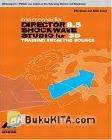

 Bagikan melalui Whatsapp
Bagikan melalui Whatsapp


![Lihat Detail Buku [CHALLENGE] Meraih Body Goals dalam 30 hari bersama Ahli Gizi](https://bukukita.com/babacms/displaybuku/120109.jpg)

